This article will sort of be all over the place however the main gist of it will be the fact that after 52 years I haven’t forgotten how to develop film. I realize that this is a skill that most all of you have mastered and it’s good to know that even after many years it’s one you won’t forget.
So, imagine yourself at 18, having just purchased your first good camera: a brand new Canon FTb. I was a senior in high school and had been taking an introduction to photography class for 8 months. We were primarily working in black and white and my first camera for the class was a borrowed Voigtländer VITO CLR rangefinder. The Canon boasted a “quick load” capability that allowed you to simply lay your film across the take-up sprocket and close the back where a plate came down over the film to ensure you were good to go. Since I had recently had two blank rolls come out of both of my Leicas, I was glad to be loading the idiot-proof FTb – a nostalgia purchase in 2022. Back in the day, I never had anything other than the normal 50mm lens for my FTb however these days I find that I usually have a medium zoom on most of my digitals. My local camera shop had a couple of used Canon fd zooms for what I thought was a good price, so I ventured over to the St.John’s district of Portland in search of a zoom. I had initially planned on getting a 70-210 f4 for $60 but I opted instead for the 75-200 f4 for $70 because of the size of the lens.
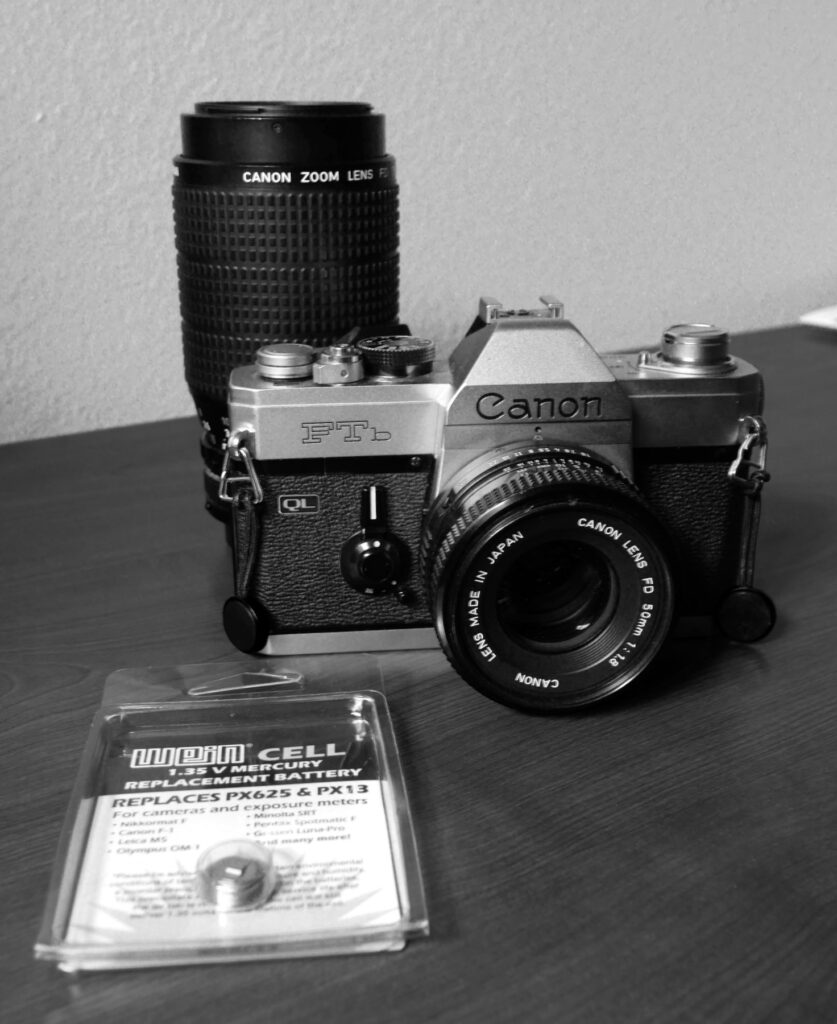
One other issue that the replacement FTb has is a battery. The OEM battery for this camera in 1972 was a 1.35v M20 mercury battery. They’re not made any longer due to the environmental issues with mercury. I solved the battery problem on my 2022 purchase with a Wein cell. These cells don’t last as long as the original mercury cells which could go as long as 10 years. When I decided to add the “new-to-me” 75-210 zoom, I also needed a new battery. They are readily available on Amazon here in the USA for around $5 a pop (so I got three).
I knew that 52 years ago, my darkroom had quite a stench largely due to the Acetic Acid. I’m currently in a house with not nearly enough room for a dedicated darkroom but my biggest concern was my wife’s chemical sensitivities. I knew that processing film the way I did as a kid wasn’t going to fly. I pondered going with caffenol but in the end I decided to try Cinestill’s Df96 monobath. Since I’d be working on the corner of a table in the garage next to a sink only having to worry about a single chemical seemed an easy way to go.
A quick trip to eBay secured a developing tank just like the one I used in high school. With the addition of a couple of pitchers, a thermometer, a squeegee and some distilled water and Adoflo, I was all set.
I laid out my film canister, a can opener, scissors and the disassembled tank in my bedroom closet (with the door closed and a towel on the floor to block any stray light) and set about opening the film can and winding the spool. You may recall that I end two rolls that ended up blank – one of which I did here and had some trouble winding the spool. This time there were no problems, and the film loaded just fine onto the spool.
The temperature in my garage seems to stay a comfortable 74 degrees F (that would be 23 C for those of you in the rest of the world) so I simply monitored the temperature of the bottle of distilled water and based my development time off that. I went with 4 minutes in the tank with 30 seconds of agitation followed by a couple of swirls every 30 seconds after that. The tank comes with a thermometer that engages the spool allowing agitation without inversion. I followed the Df96 with a rinse of tap water, followed by a second rinse of tap water, followed by a final rinse with distilled water with a drop or two of Adoflo. Opened the tank, shook out the spool, stripped out the film and voila: I was back in the developing business! I don’t recall using a squeegee all those years ago but did so this time before hanging the film to dry from the overhead garage door track.
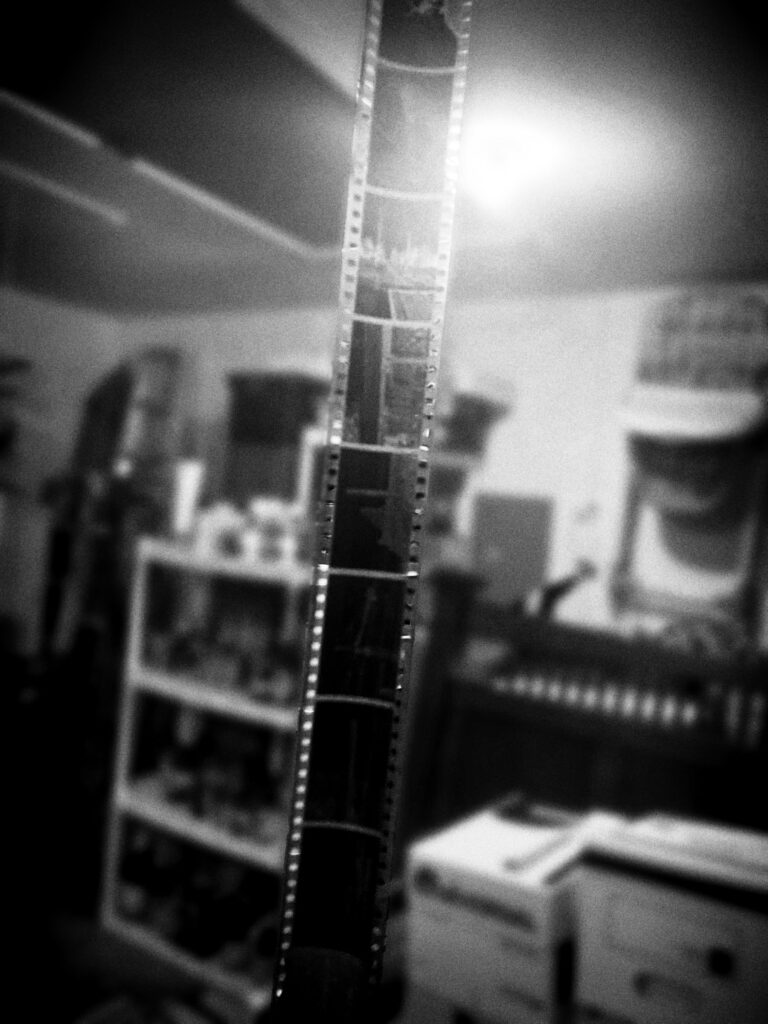
After letting the film dry I was ready for the next step: scanning. I had previously purchased a Valoi Easy 35 and scanned some lab-developed negatives with my 24mp APS-C Sony and both the 50/2.8 and 100/2.8 macro lenses. Following that trial, I purchased a 50/2.8 FF macro and scanned these newly developed shots with the 42mp FF Sony a7R3. With this et-up and a small amount of trim, my scans ended up being 39.7mp. Once you have figured out the number of tubes needed between the light box and the camera, using the Valoi is a snap.
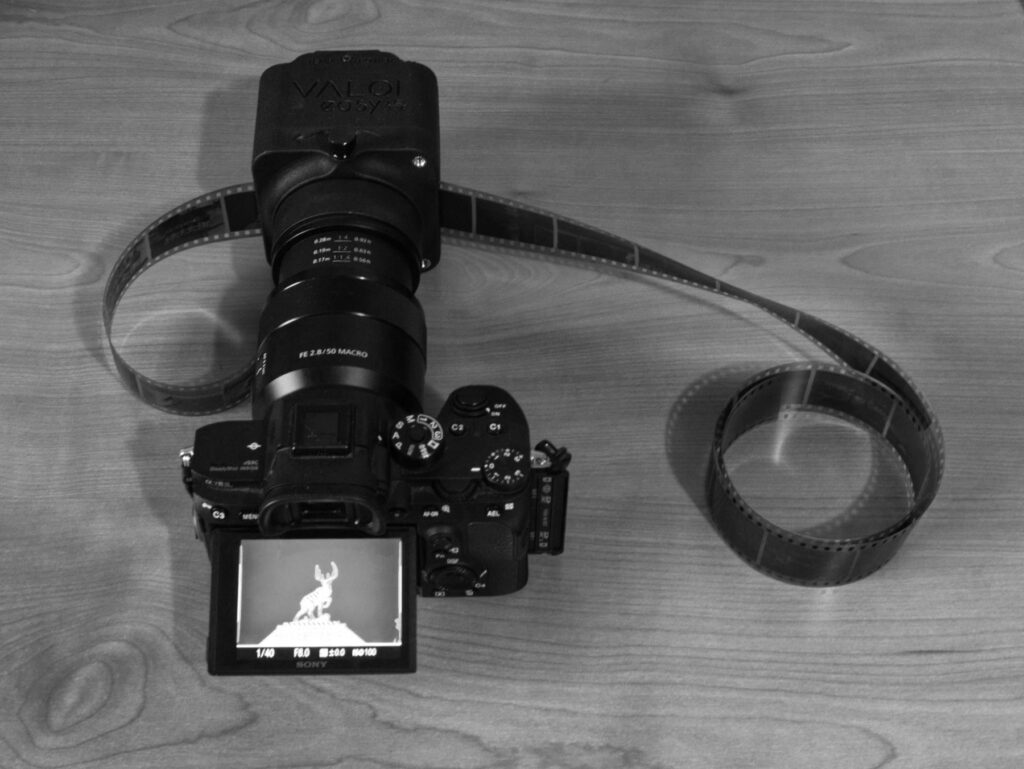
The film feeds through one side, you visually center the frame and use a remote to trigger the shutter. I only had to focus once on the first exposure – a process made easier using focus peaking.
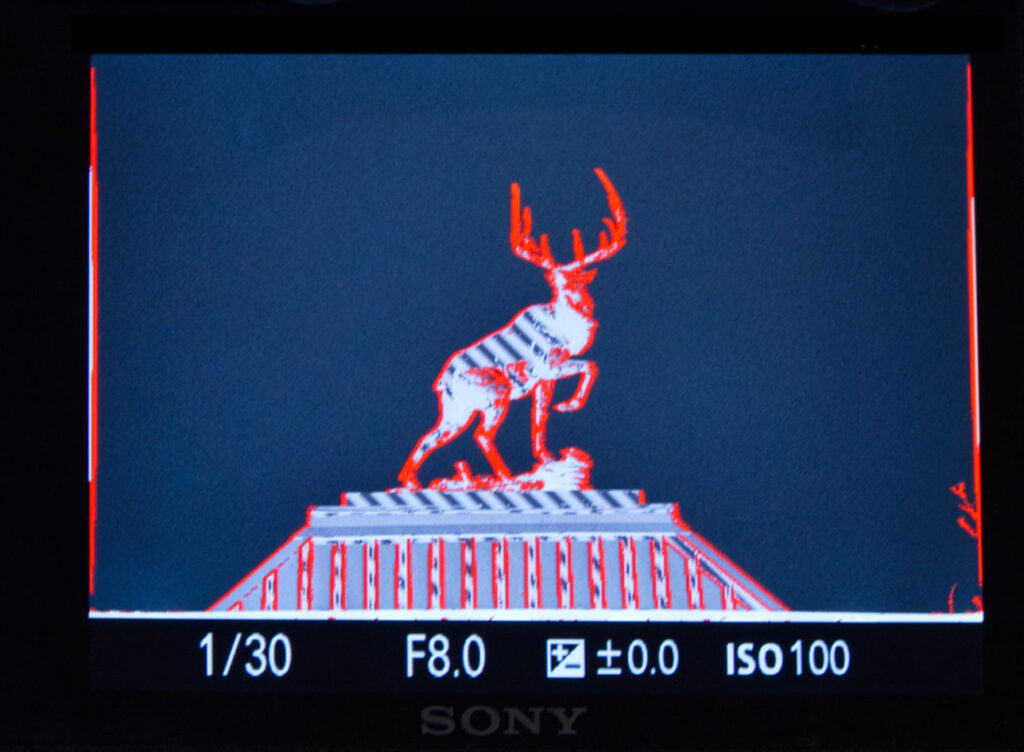
I have to say that I was really happy with how clean my negatives were and how nice the scans turned out. The above image is of a bronze sculpture of an elk that is actually life-size and sitting on the roof of the sculpture’s studio in Troutdale, OR. The resulting positive is below.
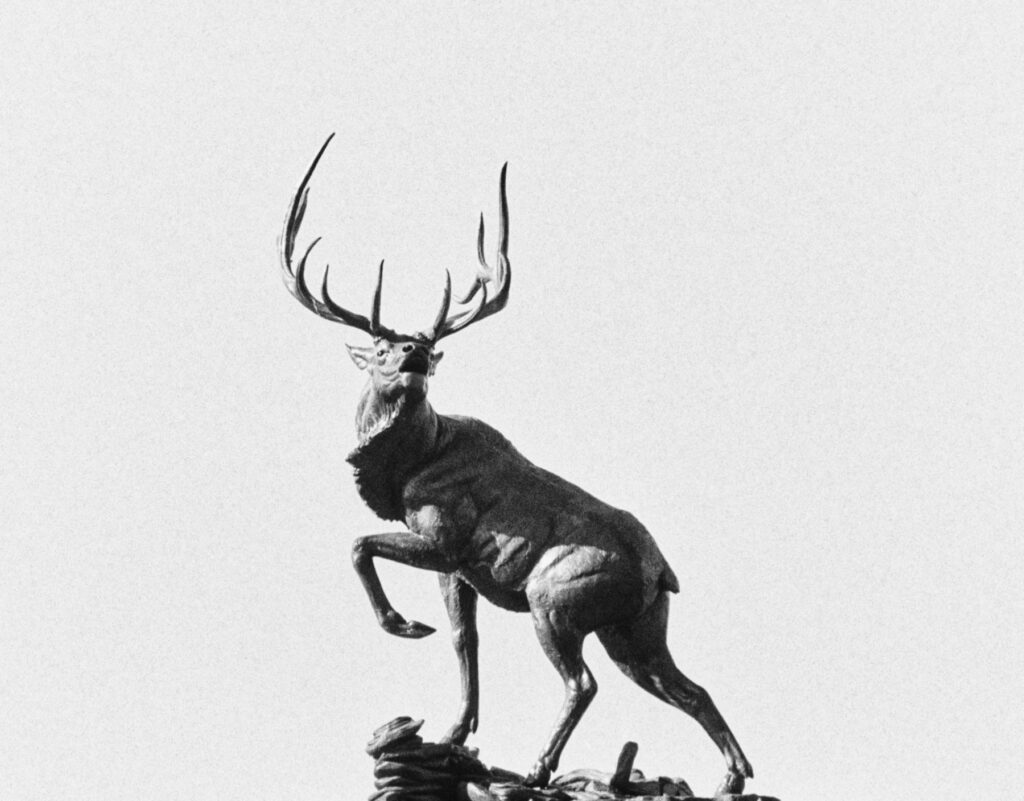
To be truthful, I was anxious to burn through the 24 exposures of Tri-X but it still took me two or three sessions. The shots are kind of “throw aways” but not completely. I shot the bronze fish the same night as I shot the bronze elk.
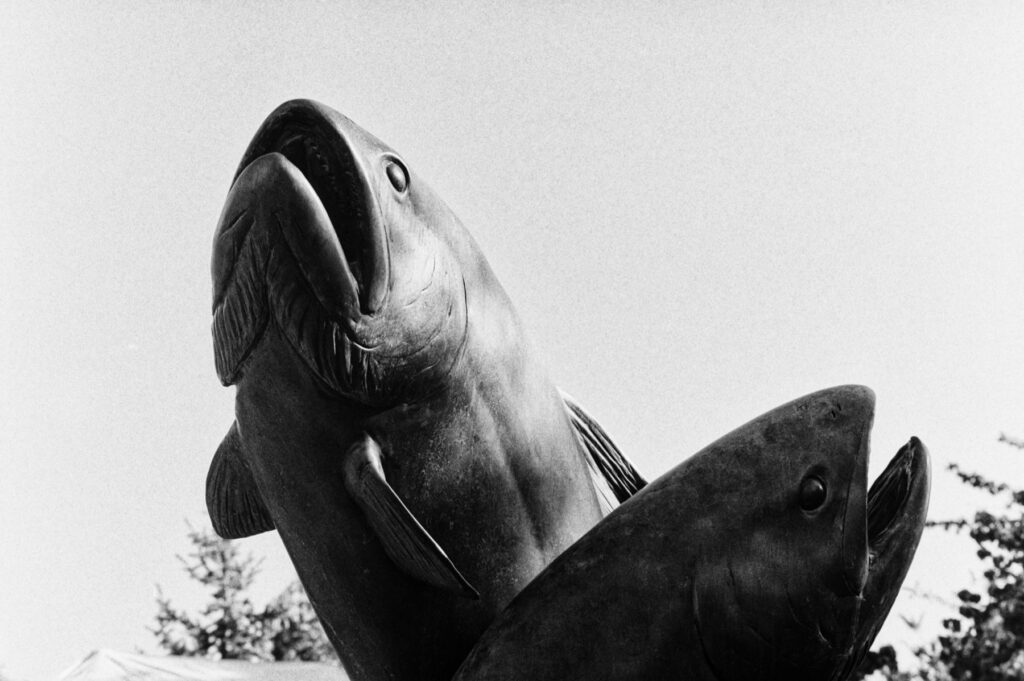
I can’t vouch for the quality of the whiskey but it looked golden in the evening sunset (same night as the above two shots). Despite being spelled with an “e” I have no idea if this is Scotch, Bourbon or Irish Whiskey. I do know it is a local and their web site claims it’s an American whiskey (so I’m thinking Bourbon).
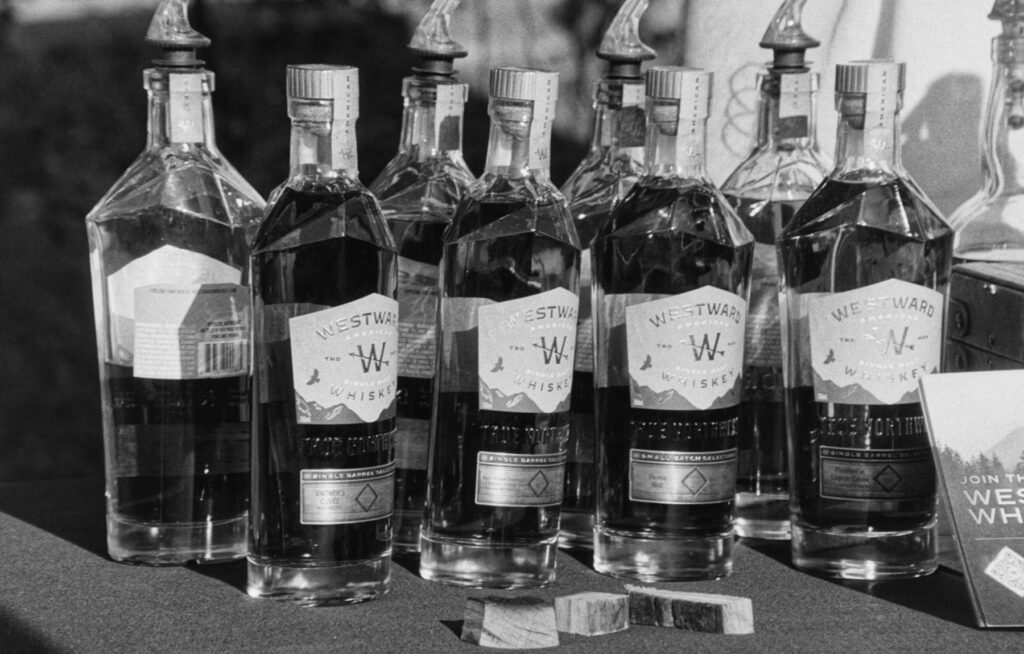
I’d been past this old mill in Oregon City when the water going over the upstream falls was epic, unfortunately it hasn’t rained here in Oregon for about two months and the river has been down. I had to content myself with shots of the mill rather than shots of the falls.
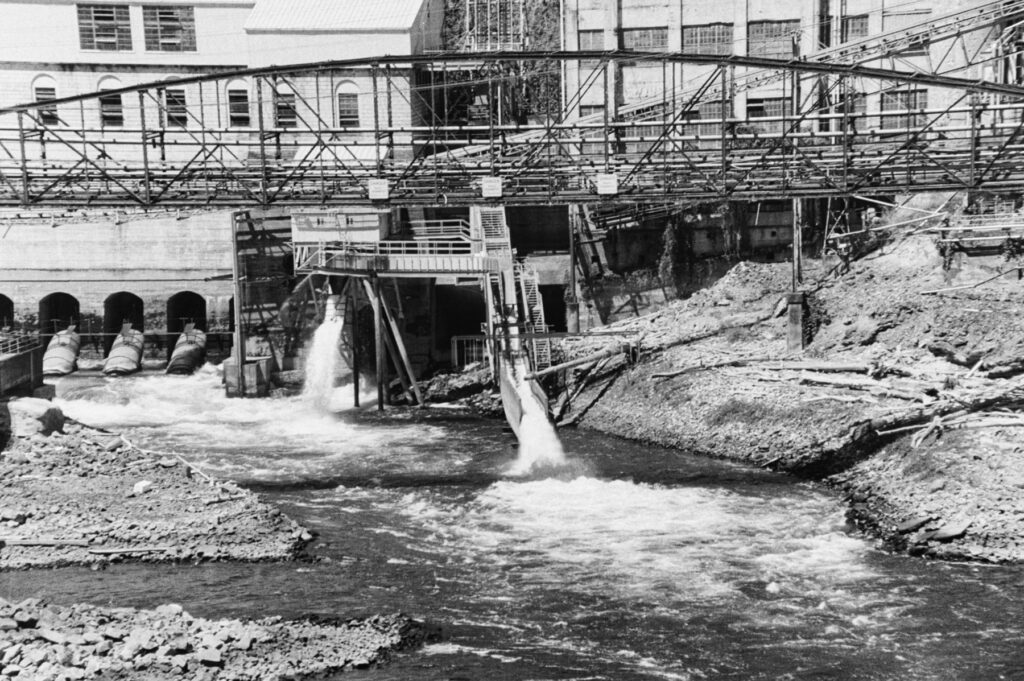
And what would a day be without a long perspective shot down the tracks? Portland has a light-rail system that goes about 15 miles east and west of downtown. This shot is from the Gresham City Hall station looking west (towards Portland).
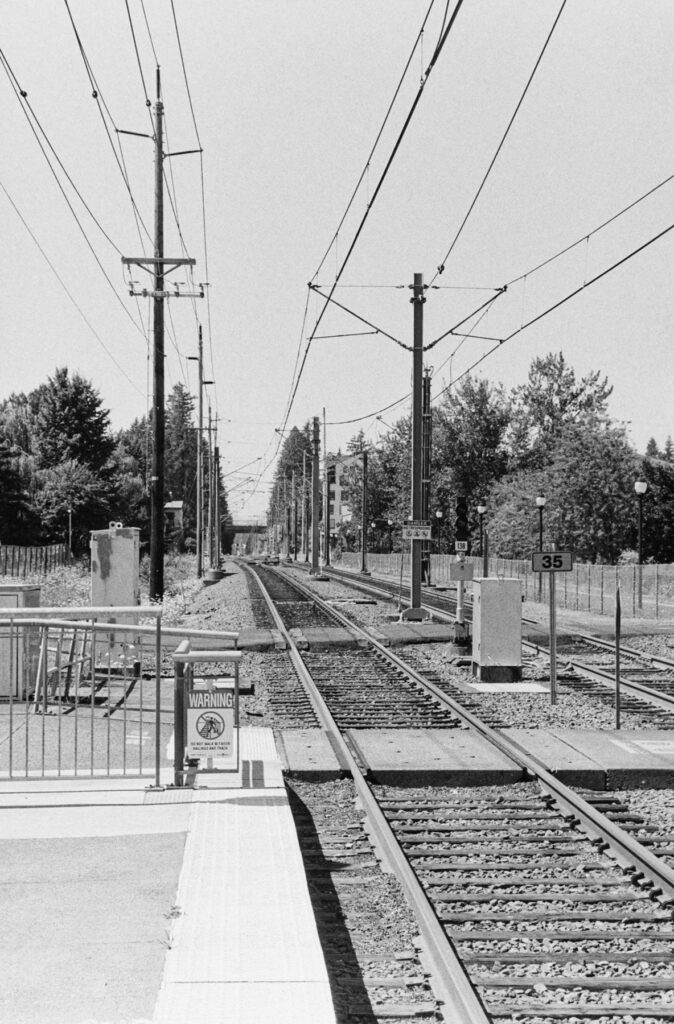
All of the above shots were metered in the FTb and shot on Tri-X using the 75-200 zoom. The resulting scans were processed using Affinity Photo v2 and the Nik Collection Silver Efex Pro v2.
I have to say that I was pleased with the Wein cell driving the meter, the lens performance, the Cinestill Df96 monobath and the 39mp scans that I got using my FF Sony and the Valoi Easy35. I still have 3 rolls of Tri-X that I want to push through the Df96 before it turns impotent and I guess the rolls of 120 will need to be sent out (I’m not ready to tackle color or rig up a scan set-up for 120 film).
Share this post:


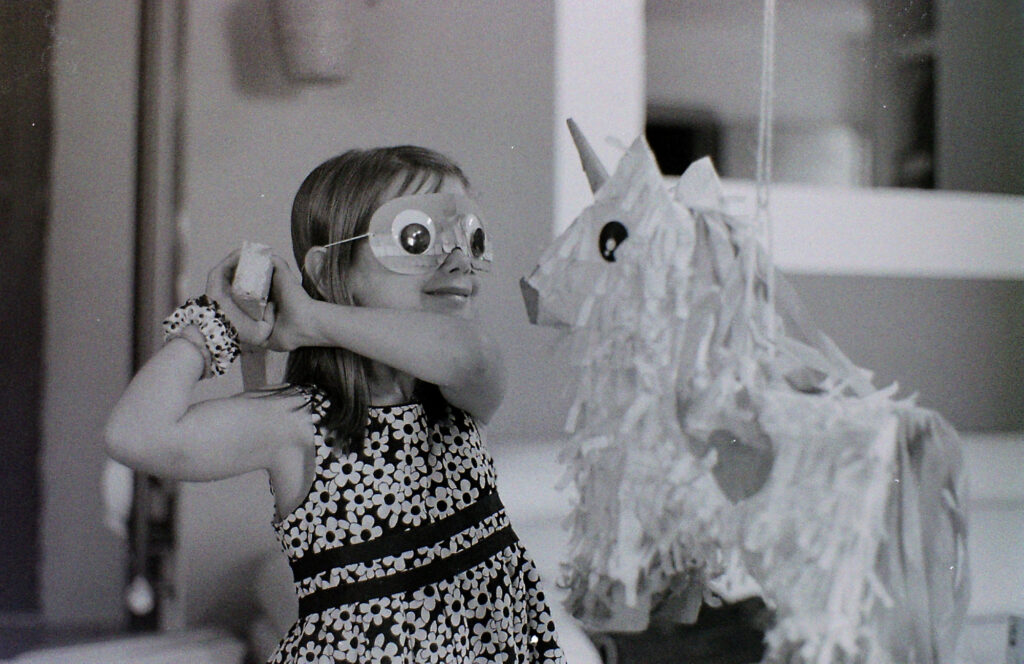
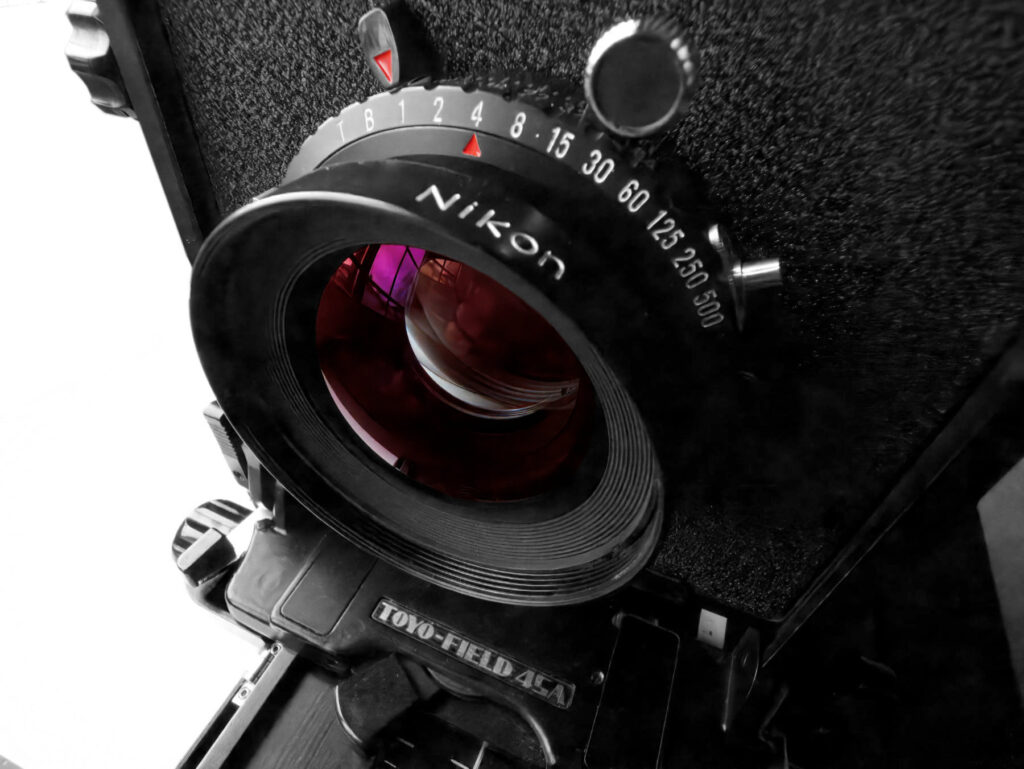
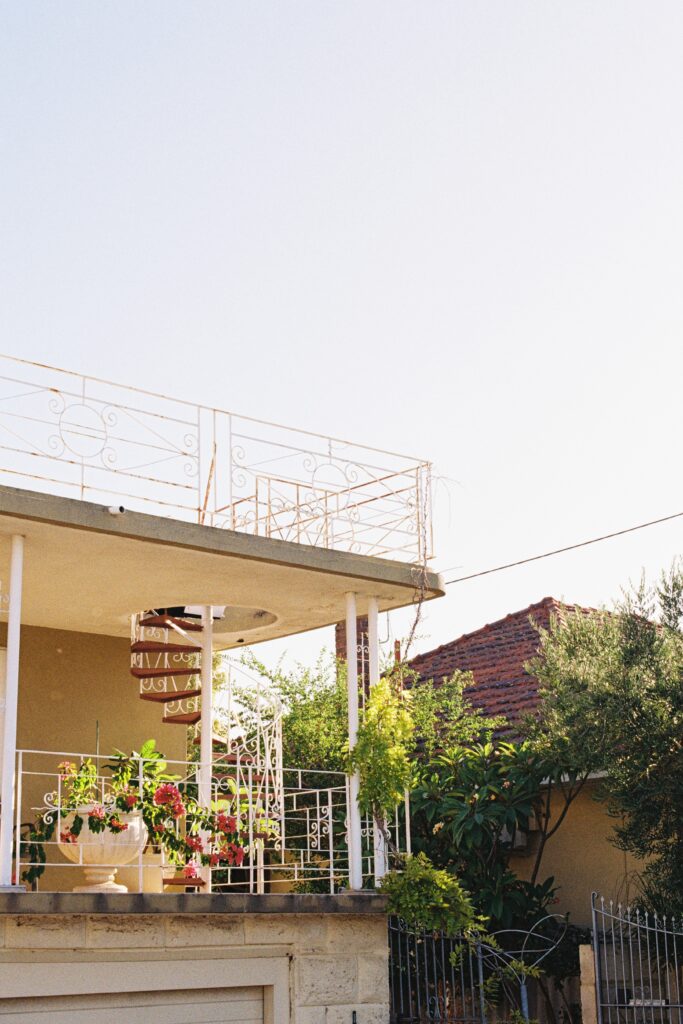




Comments
Ken Rowin on Just like riding a bike
Comment posted: 01/10/2024
Comment posted: 01/10/2024
Geoff Chaplin on Just like riding a bike
Comment posted: 01/10/2024
Gary Smith on Just like riding a bike
Comment posted: 01/10/2024
Bill Brown on Just like riding a bike
Comment posted: 01/10/2024
Comment posted: 01/10/2024
Tony Warren on Just like riding a bike
Comment posted: 01/10/2024
Comment posted: 01/10/2024
Comment posted: 01/10/2024